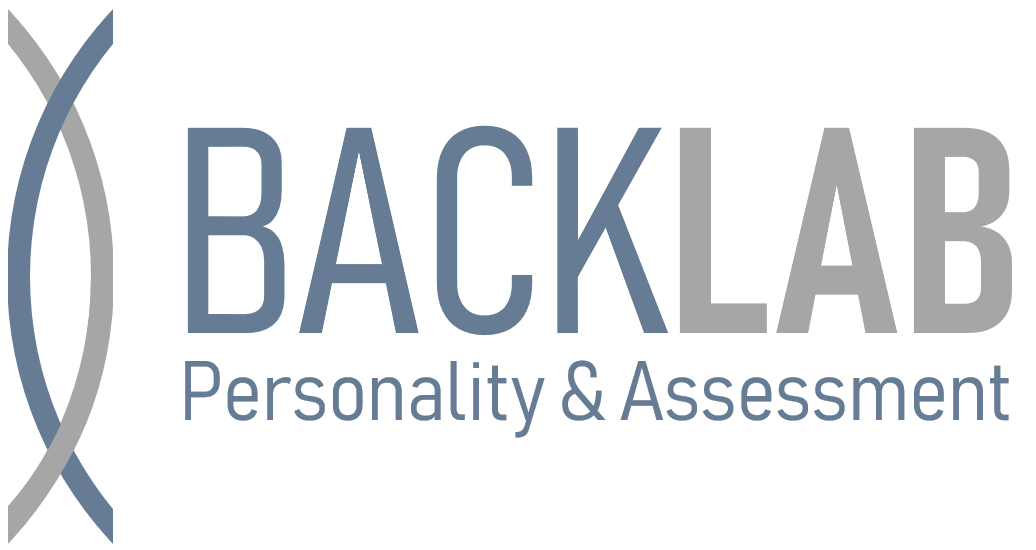Accuracy of personality judgments
Judging other’s personalities is a ubiquitous and highly consequential phenomenon. Even if we encounter a complete stranger we are immediately left with an impression of his/her personality traits. Personality judgments are not only often based on minimal information, they also tend to be relatively stable and influence our everyday social decisions. How valid are these spontaneous social snapshots? We investigate the accuracy of personality judgments at zero acquaintance in a wide range of social contexts including photographs, video- and audio-taped as well as written self-introductions, dyadic and group interactions, creative linguistic expressions, and computer-mediated communications. We focus on explaining why (processes: How do people achieve accuracy?) and when (moderators: Who is more accurate? Who can be judged more accurately? What aspects can be judged more accurately? Under which circumstances is accuracy stronger?) personality impressions are accurate. In doing so, we typically apply Brunswikian lens model analyses that explain accuracy patterns by individual differences in how much observable cues reflect the targets actual personality (cue validity) and in how consistent and sensitive observers make use of these cues when forming their personality judgments (cue utilization). We also investigate the long-term social consequences of individual and dyadic differences in zero acquaintance accuracy (e.g., effects on friendship development, and status attainment). Further projects broaden the scope of this approach by integrating it with (a) research on hindsight bias and knowledge updating, (b) dual process models of information processing, (c) research on meta-accuracy and impression management, and (d) eye-tracking technology. In addition, we increasingly apply the conceptual and methodological toolkit developed in these projects to analyze and potentially improve the accuracy of interpersonal judgments in important applied contexts such as impressions of migrants and refugees, client and therapist judgments in the course of psychotherapy, judgments during different stages of the applicant selection process, and teacher-pupil judgments in the classroom.
Representative publications:
Back, M. D., & Nestler, S., (2016). Accuracy of Judging Personality. In J. A. Hall, M., Schmid Mast, & T. V., West (Eds.). The social psychology of perceiving others accurately (pp. 98-124). Cambridge University Press. pdf
Back, M. D., Schmukle, S. C. & Egloff, B. (2008). How extraverted is honey.bunny77@hotmail.de? Inferring personality traits from email addresses. Journal of Research in Personality, 42, 1116-1122. pdf
Back, M. D., Stopfer, J. M., Vazire, S., Gaddis, S., Schmukle, S. C., Egloff, B. & Gosling, S. D. (2010). Facebook profiles reflect actual personality, not self-idealization. Psychological Science, 21, 372-374. pdf
Breil, S. M., Osterholz, S., Nestler, S., & Back, M. D. (2021). Contributions of nonverbal cues to the accurate judgment of personality traits. In T. D. Letzring & J. S. Spain (Eds.), The Oxford handbook of accurate personality judgment (pp. 195–218). Oxford University Press. pdf
Hall, J. A., Back, M. D., Nestler, S., Frauendorfer, D., Schmid Mast, M., & Ruben, M. A. (2018). How do different ways of measuring individual differences in zero-acquaintance personality judgment accuracy correlate with each other? Journal of Personality, 86, 220-232. pdf
Hirschmüller, S., Egloff, B., Nestler, S., & Back, M. D. (2013). The dual lens model: A comprehensive framework for understanding self-other agreement of personality judgments at zero acquaintance. Journal of Personality and Social Psychology, 104, 335-353. pdf
Hirschmüller, S., Egloff, B., Schmukle, S. C., Nestler, S. & Back, M. D. (2015). Accurate Judgments of Neuroticism at Zero Acquaintance: A Question of Relevance. Journal of Personality, 83, 221-228. pdf
Hirschmüller, S., Schmukle, S. C., Krause, S., Back, M. D., & Egloff, B. (2018). Accuracy of self-esteem judgments at zero acquaintance. Journal of Personality, 86, 308-319. pdf osf
Küfner, A. C. P., Back, M. D., Nestler, S., & Egloff, B. (2010). Tell me a story and I will tell you who you are! Lens model analyses of personality and creative writing. Journal of Research in Personality, 44, 427-435. pdf
Leising, D., & Back, M. D. (in press). Person perception and accuracy. In V. Zeigler-Hill & T. K. Shackelford (Eds.), Encyclopedia of personality and individual differences. New York, NY: Springer. pdf
Nestler, S. & Back, M.D. (2013). Applications and extensions of the lens model to understand interpersonal judgments at zero acquaintance. Current Directions in Psychological Science, 22, 374-379. pdf
Nestler, S., & Back, M. D. (2017). Using cross-classified structural equation models to examine the accuracy of personality judgments. Psychometrika, 82, 475-497. pdf & Supplemental materials at OSF
Nestler, S., Egloff, B., Küfner, A. C. P., & Back, M. D. (2012). An integrative lens model approach to bias and accuracy in human inferences: Hindsight effects and knowledge updating in personality judgments. Journal of Personality and Social Psychology, 103, 698-717. pdf
Osterholz, S., Breil, S. M., Nestler, S., & Back, M. D. (2021). Lens and dual lens models. In T. D. Letzring & J. S. Spain (Eds.), The Oxford handbook of accurate personality judgment (pp. 45–60). Oxford University Press. pdf
Stopfer, J. M., Egloff, B., Nestler, S., & Back, M. D. (2014). Personality expression and impression formation in online social networks: An integrative approach to understanding the processes of accuracy, impression management, and meta-accuracy. European Journal of Personality, 28, 73-94. pdf

